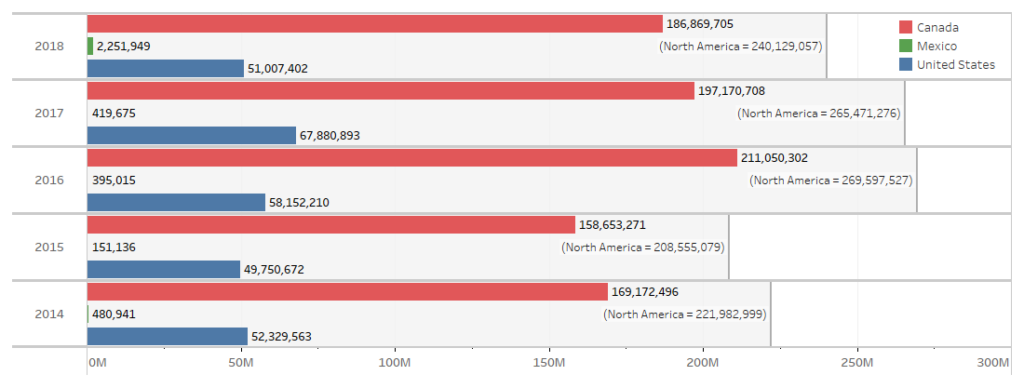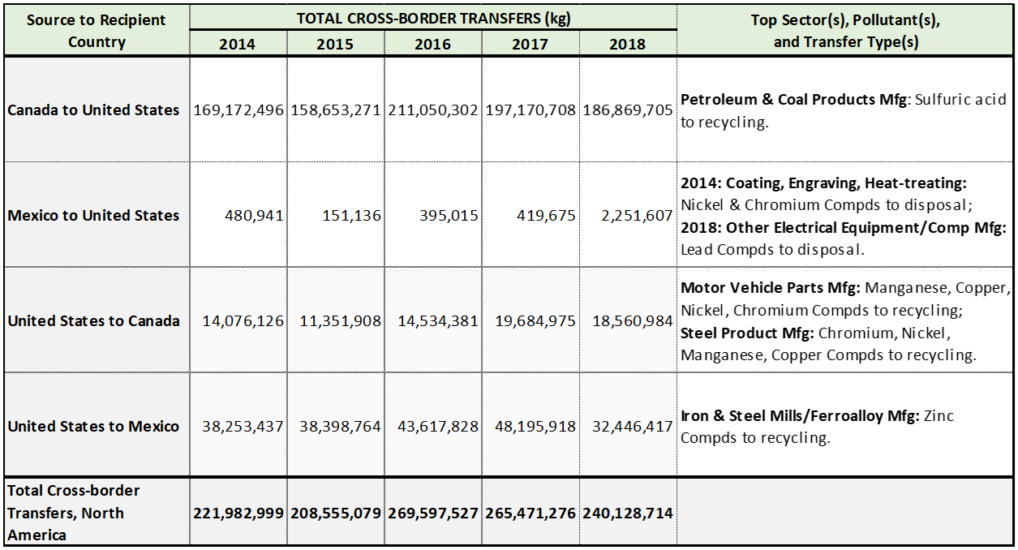1 Overview of Releases and Transfers in North America, 2014–2018
1.6 Cross-border Transfers of Pollutants
Figure 9 illustrates the cross-border transfers of pollutants within North America between 2014 and 2018. It shows that annual transfers ranged from 208 million kg to almost 270 million kg during this period.[9]
Figure 9. Cross-border Transfers of Pollutants in North America, 2014–2018
As shown in Table 3, transfers of sulfuric acid from Canadian petroleum and coal products manufacturing facilities (NAICS 3241) to the United States for recycling accounted for more than 75% of annual cross-border transfers in the region.
Table 3. Top Sectors and Pollutants, North American Cross-border Transfers, 2014–2018
This table also shows that transfers from the United States to Canada, primarily of metal compounds such as manganese, copper, nickel, and chromium for recycling, were from two sectors, motor vehicle parts manufacturing (NAICS 3363) and steel product manufacturing (NAICS 3312). Most of the annual transfers from the United States to Mexico were of zinc compounds sent from the iron and steel mills and ferroalloy manufacturing sector (NAICS 3311) for recycling at the Zinc Nacional facility in Nuevo León. These transfers accounted for approximately 23% of annual cross-border transfers.
Pollutant transfers from Mexico to the United States varied greatly over this period, with one facility in the manufacturing and reproducing magnetic and optical media sector (NAICS 3346) accounting for just over 50% of the total in 2014, sending almost 259,000 kg of nickel compounds to the United States for recycling. However, in 2018 a battery manufacturer (NAICS 3359) accounted for most of the total, sending almost 1.5 million kg of lead compounds to the United States for disposal.
Cross-border transfers to disposal are examined in chapter 2 of this report, and data for all North American cross-border transfers can be accessed through Taking Stock Online.
[9] Note that the most recent NPRI dataset includes revisions to Canadian cross-border transfers data for the 2014-2018 period that are not reflected in this report. Readers can consult the NPRI website for details.

